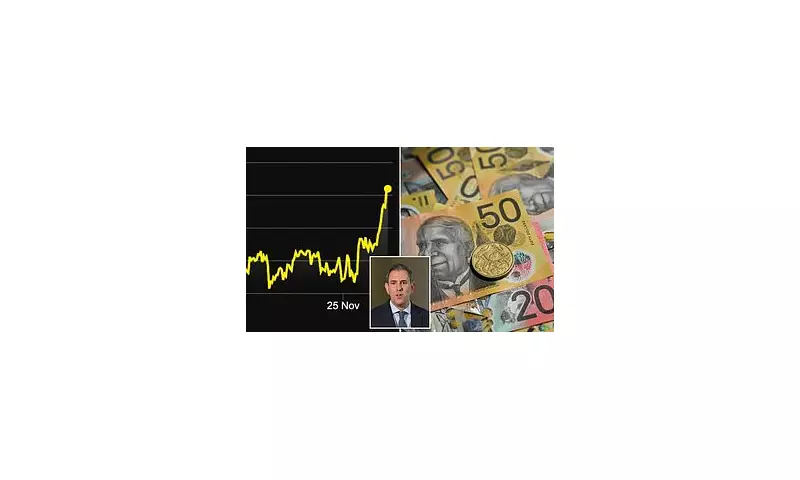
The Australian dollar has experienced a sharp increase following the release of unexpectedly high inflation data, a development that financial experts warn spells bad news for homeowners with mortgages.
Inflation Surge Dashes Hopes for Rate Relief
New figures reveal that Australia's inflation rate climbed to 3.8 per cent in the year to October, marking a 16-month high and significantly surpassing market forecasts. This surge in the cost of living has effectively extinguished any lingering expectations for an interest rate cut in the near future, with a rate hike now considered a more probable outcome.
Financial educator Nicole Pedersen-McKinnon interpreted the market's reaction, stating the rising Australian dollar is a clear signal. 'This is an indication market expectations are now considering that an interest rate rise is more likely than a cut,' she said. Shortly after the report's publication, the currency strengthened, buying 64.81 US cents, up from 64.58 US cents the previous day.
'Things are not looking good for further rate cuts anytime soon, which is just really devastating news so close to Christmas,' Pedersen-McKinnon added, highlighting the grim timing for households. 'At the beginning of the year, there were half a dozen rate cuts expected. We have had three of those and now it looks like we are going to get no more.'
Mortgage Holders Face a Bleak Outlook
The immediate consequence of this economic data is a heightened burden for mortgage holders. Pedersen-McKinnon described it as 'devastating news for mortgage holders at the most expensive time of year, with no prospects for rate relief on the horizon anytime soon.'
However, she pointed to one potential lifeline: refinancing. Homeowners could potentially switch their mortgage to a different lender offering a lower rate. Data from Canstar supports this strategy, indicating that an average owner-occupier with a $600,000 loan over 25 years could save an estimated $2,981 in interest over two years by switching to the lowest fixed rate.
'That would be the absolute best Christmas present you could give yourself,' Pedersen-McKinnon remarked. This advice comes with a caveat, as the number of lenders offering fixed rates below 5 per cent is already declining, dropping from 46 to 36 in the past month.
Energy Costs Drive Inflation Spike
The primary driver behind the alarming inflation figure was a massive 37.1 per cent increase in electricity costs over the past 12 months. The Australian Bureau of Statistics attributed this jump to the fact that state government electricity rebates have been used up by households.
Treasurer Jim Chalmers acknowledged the inflation figure and addressed concerns about the phasing out of energy subsidies, confirming they are 'not a permanent part of the budget.' The government is expected to make a decision on future electricity rebates in its upcoming mid-year budget update.
The Australian Chamber of Commerce and Industry echoed these concerns, with CEO Andrew McKellar stating, 'Electricity for example has gone up by 37 per cent...Those chickens were always going to come home to roost and we can't expect rebates to continue indefinitely.' Other significant contributors to inflation included food and non-alcoholic beverages, and recreation and culture, which both rose by 3.2 per cent.





